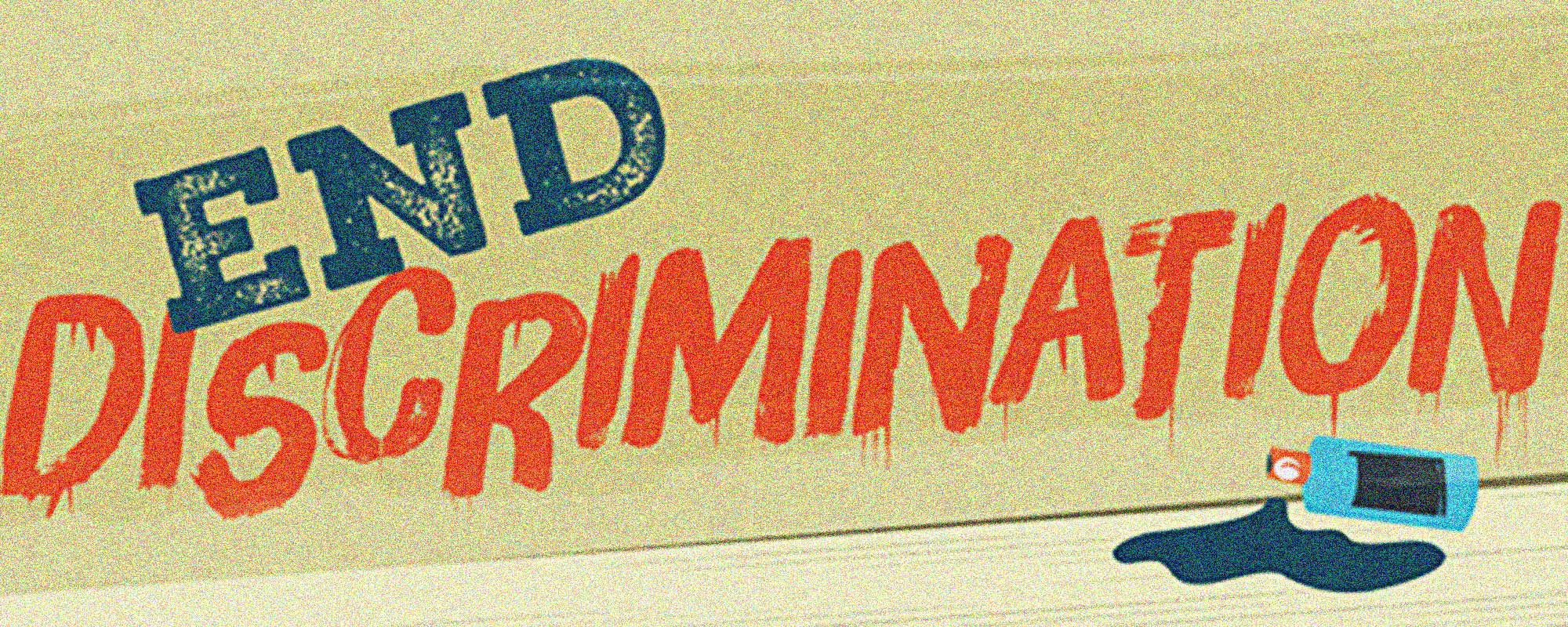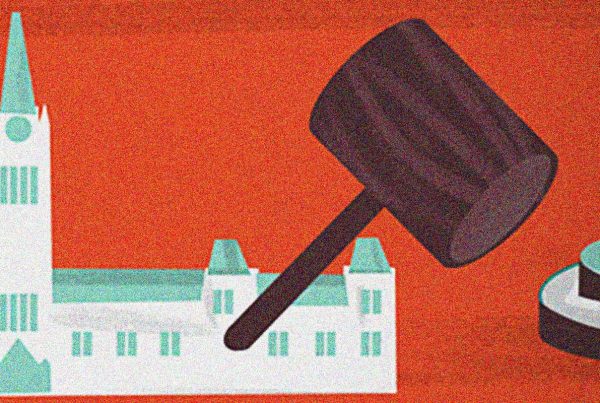Because the Learn section of TalkRights features content produced by CCLA volunteers and interviews with experts in their own words, opinions expressed here do not necessarily represent the CCLA’s own policies or positions. For official publications, key reports, position papers, legal documentation, and up-to-date news about the CCLA’s work check out the In Focus section of our website.
An Overview:
In 1995, an ex-National Hockey League player Brian Smith was killed by Jeffrey Arenburg, a family man who had paranoid schizophrenia. Jeffrey heard voices from broadcast towers and believed that killing a broadcaster would get rid of the voices. After a period of being in hospital and with a legal hearing, Jeffrey was living amongst a community and had plans to live close to his daughter. The media portrayed Jeffrey as nothing more than a killer with senseless motives. In 2000, “Brian’s Law” (named after Brian Smith) was introduced in Ontario in response to the public’s fear that patients were going off medication, refusing treatment, and were a danger to the community.
Brian’s law includes something called a Community Treatment Order (CTO). A CTO is a legal order made by a physician or psychiatrist. It outlines the conditions that a patient leaving a psychiatric ward has to meet in order to live in a community setting. A CTO allows a psychiatrist to call police to bring patients in for an assessment if they fail to comply with the treatment plan that goes with the Order. In Canada, all jurisdictions except New Brunswick and the Territories use CTOs or comparable legislation.
The plan creates conditions which are listed in what is called a Community Treatment Plan, and can include such things as required medication, medical appointments, and staying away from drugs and alcohol. It may even specify the area they can live in; in general, any requirements that the doctor believes are necessary to allow the patient to live in the community may be part of the plan. It is a form of compulsory treatment, because if the patient does not comply and is said to be unfit to live in the community by the doctor, they must remain (or possibly be) institutionalized.
In a situation in where the patient is said to be “incapable”, there will be a “substitute decision maker” (SDM). This means that if a patient is considered unable to understand the benefits and consequences of making a decision for their treatment, someone will be asked to make decisions on their behalf. There is a list of possible SDM’s, with the patient’s guardian ranking highest, that is used to determine the appropriate person to have decision-making power.
A person can be put on a CTO if he or she has a “severe” mental illness and meets all six of the following conditions:
1. During the past three years:
- The individual has been a patient in a psychiatric facility two or more times, or for a total of 30 days or more,
OR - The patient has previously been on a CTO.
2. The community treatment plan must have been made with the input of the patient, the substitute decision maker, the doctor and any others involved in their care.
3. The doctor has examined the patient in the 72 hours before the community treatment plan is entered into and the doctor believes the following 5 things:
- The patient is suffering from a mental illness that requires continuing treatment while living in the community
- If patient is not currently a patient in a psychiatric facility, they clearly meet the conditions for a psychiatric assessment.
- If the patient doesn’t receive continuing treatment, it is likely that the patient will cause physical harm to themselves or someone else, or the patient will experience severe mental or physical decline.
- The patient is able to comply with the plan.
- The treatment that is described in the plan has to be available in the community.
4. The doctor has spoken to and consulted with all the people named in the plan.
5. The doctor is satisfied with the patient and their substitution decision makers have consulted with a rights advisor and have been informed of their legal rights.
6. The patient or their substitute decision maker agreed to the plan.
What’s the problem?
Community Treatment Orders are controversial: on one hand there are those who support CTOs on the grounds that it offers a less restrictive alternative to hospitals; on the other hand there are those who say that it is “coerced” treatment and it violates the patients’ rights. Indeed, those who support CTO’s argue that in many cases the patients do not have insight into their condition (they do not think they have a mental illness) and society has an obligation to “care for citizens who cannot care for themselves” (see the article by Dr. O’Reilly, linked below). Another major argument for Compulsory Treatment Orders is that it reduces the number of patients who become victims of harm or abuse, but studies of aggressive incidents and hospitalization rates have given inconclusive results. It is not clear whether or not CTO is effective in meeting this goal.
The issue is complicated by public misconceptions and fears about mental illness, as seen in the case of Brian Smith. The rare incidents of violent crime attract media attention, coverage which often feeds fear, such as in the highly publicized case of Vince Li, later diagnosed as schizophrenic and not criminally responsible, who beheaded Tim McLean on a Greyhound bus in Manitoba in 2008. When Vince Li was allowed to leave the Mental Health Centre where he was sent for treatment on supervised visits in 2013, the public attitude, fanned by headlines such as “The Man Who Decapitated His Seatmate on a Greyhound Bus is Set to be Released”, was fearful. Mr. Li, in response, stated “Mental illness is an illness. It is treatable. My schizophrenia is not the real me, but it is an illness.” (see the interview with Mr. Li here )
The use of CTOs is on the rise but there are those who argue that the outcome of CTOs does not justify the restrictions put on the patient’s liberties. There is a concern that attempts to coerce patients into treatment is to make the public feel safe, particularly because the media can create a false link between mental illness and violence. There is also a concern that CTOs may be used to compensate for under-resourced facilities for individuals with mental health challenges, and a general lack of funding for mental health services. In addition, CTOs have been criticized on ethical grounds; some opponents of CTOs question the impact on fundamental human rights for the patients when doctors are given the power to define what someone can or cannot do in their life. It also raises the question of whether “recovery” can have real value if treatment is done against the patients will as it also may damage the necessary ongoing relationship between the patient and their treatment team. Another problem with consent is that CTOs are based upon considerations of risk and harm instead of the patient’s capacity to consent. It is argued that if patients are not actually a risk to others but rather are a risk to themselves, CTOs may be considered discriminatory; after all, there are lots of people who take risks that are potentially dangerous, such as smoking.
As you can see, CTOs are a contested practice. Should the need to provide adequate and effective care for vulnerable people take precedence over a patients’ right to determine the course of their treatment? How are decisions about competence made, how should they be made, and is the practice of CTOs grounded in medical principles and genuine need, or affected by stigma and fear? The answers to these questions are contextual and extremely difficult, involving clinical, legal, social, and philosophical issues. If you would like to learn more, this is a good place to start: “Why Are Community Treatment Orders Controversial?” You can also see our interview with the author of this piece, Dr. Richard O’Reilly, and browse our collection of news stories and resources.
About the Canadian Civil Liberties Association
The CCLA is an independent, non-profit organization with supporters from across the country. Founded in 1964, the CCLA is a national human rights organization committed to defending the rights, dignity, safety, and freedoms of all people in Canada.
For the Media
For further comments, please contact us at media@ccla.org.




